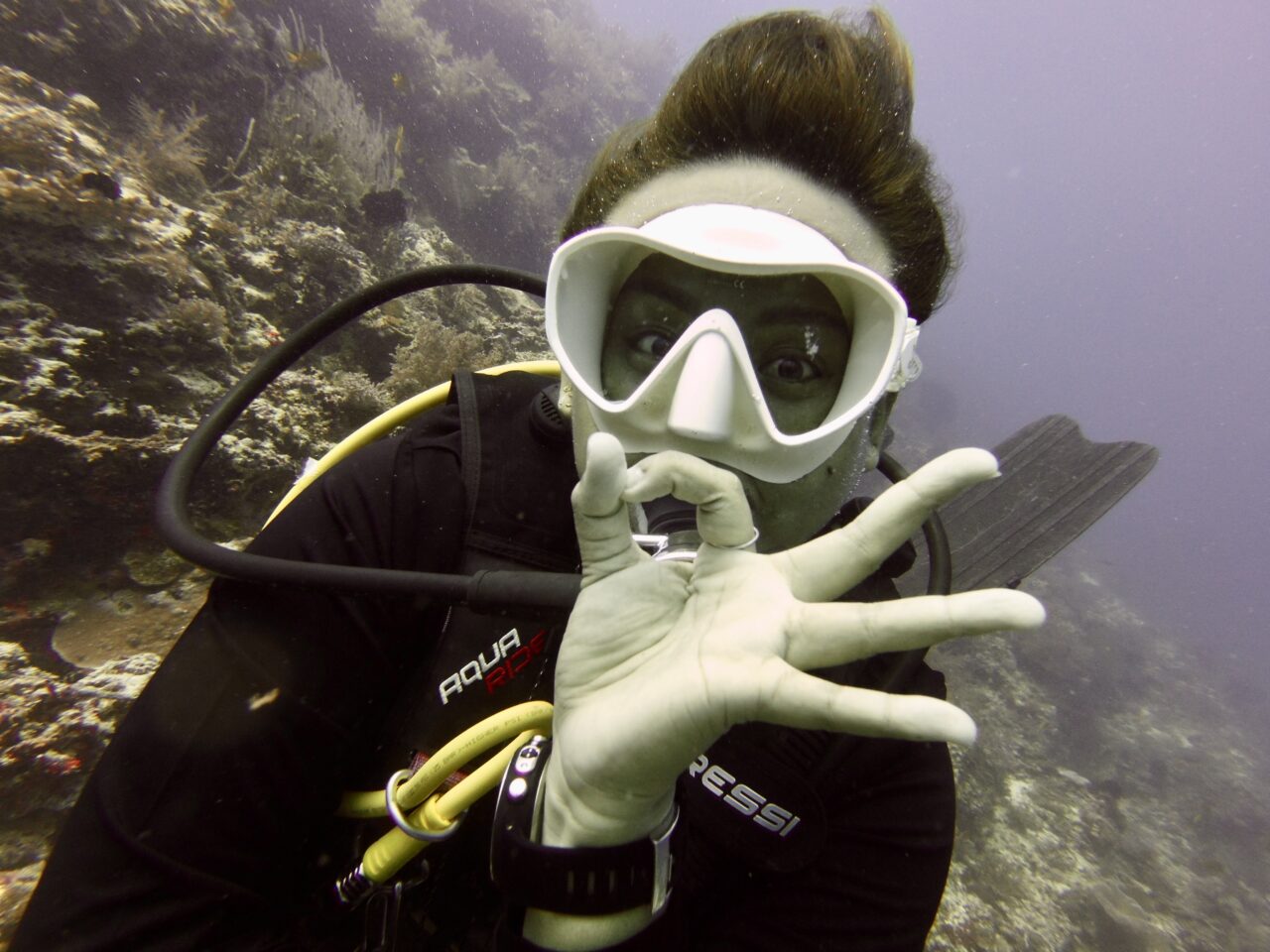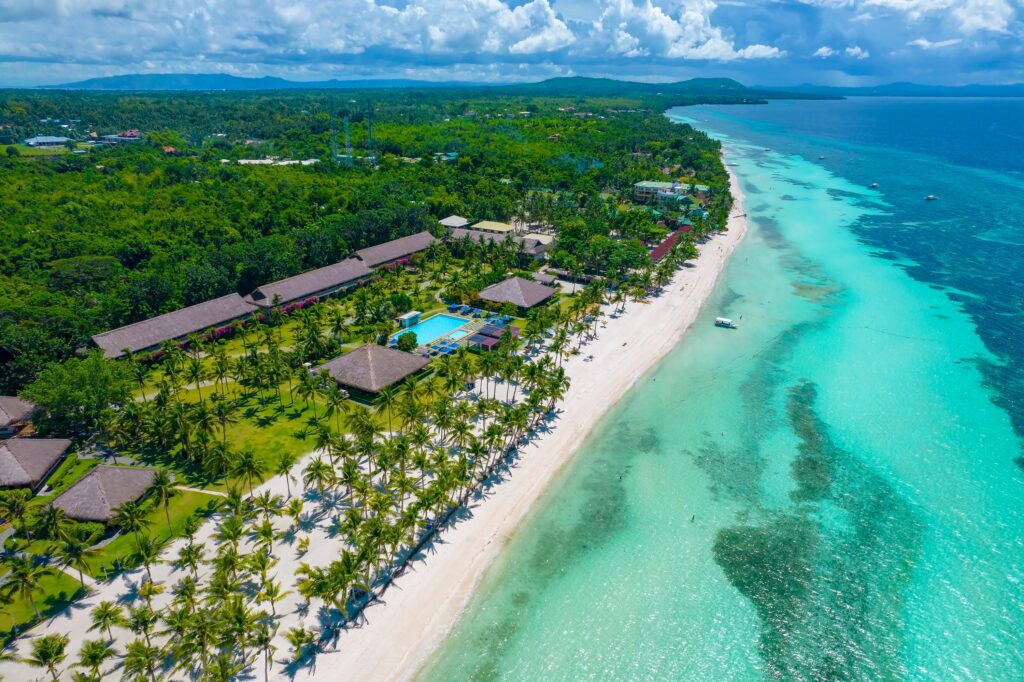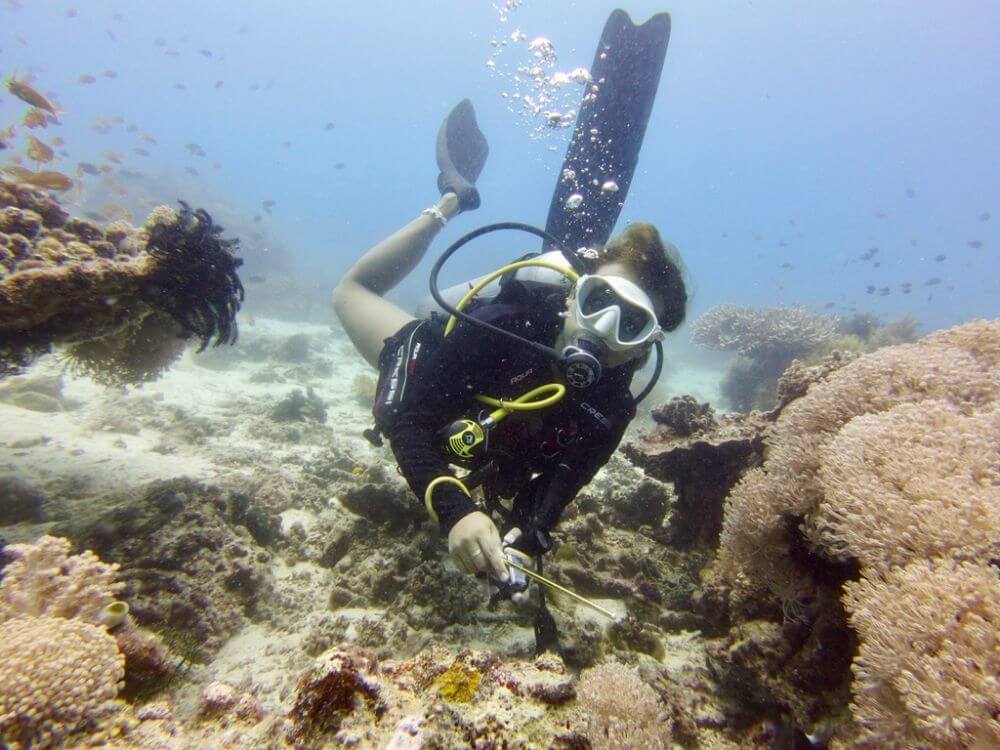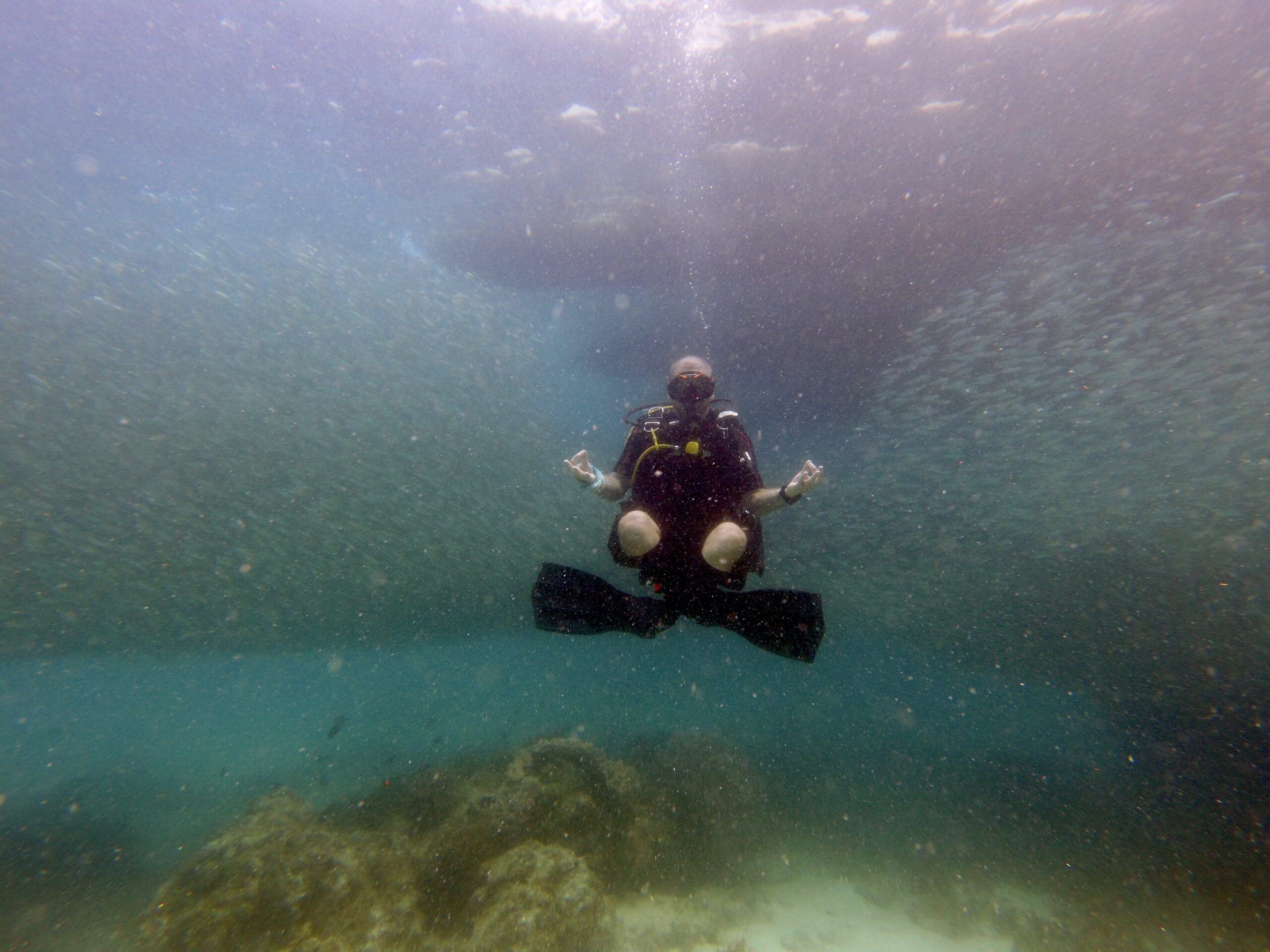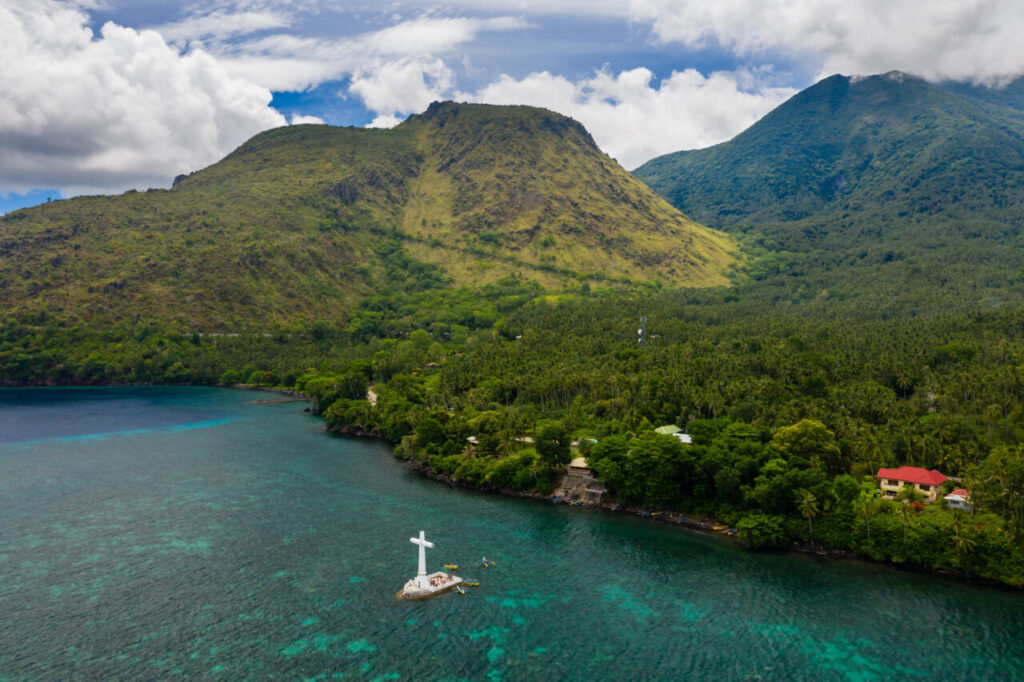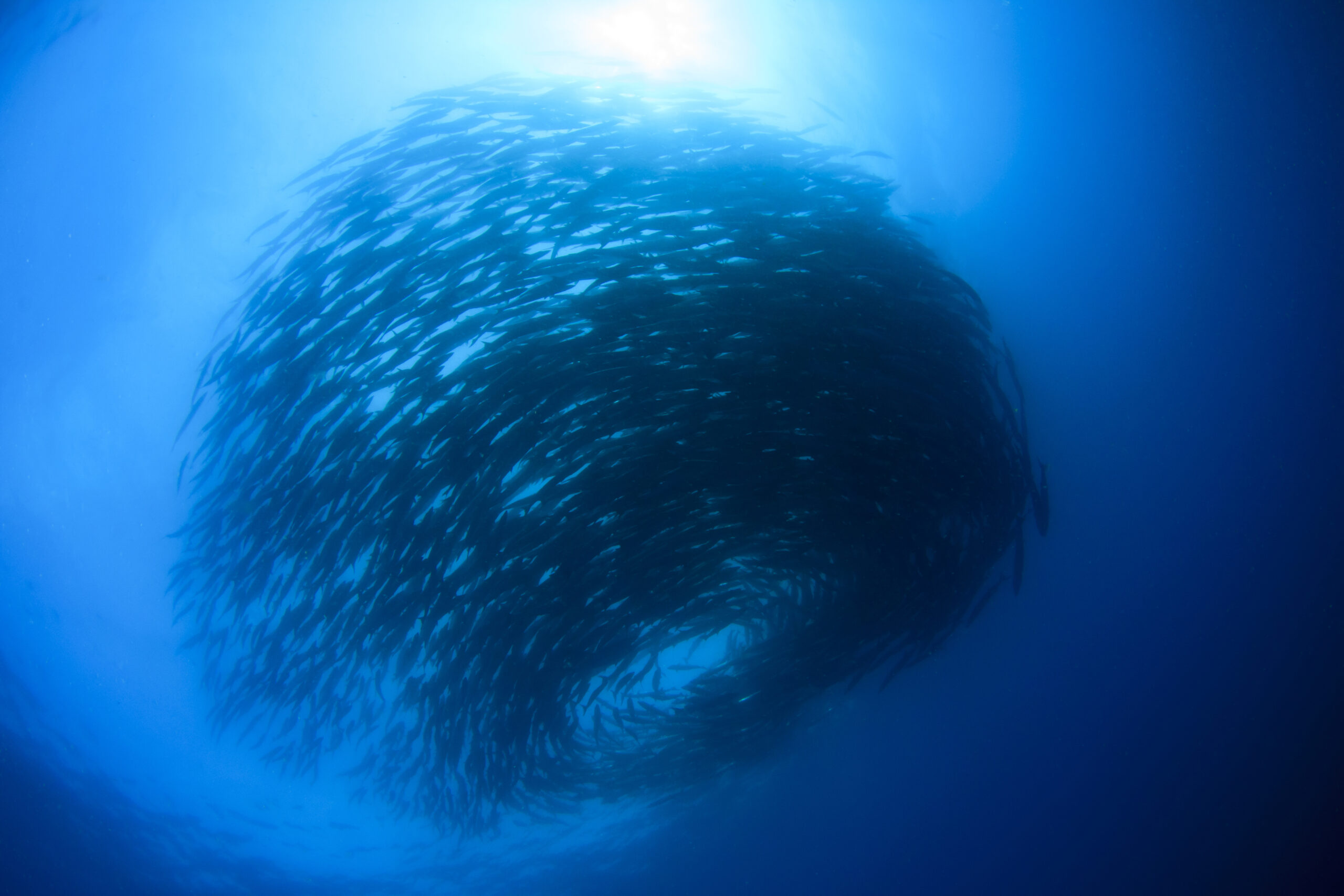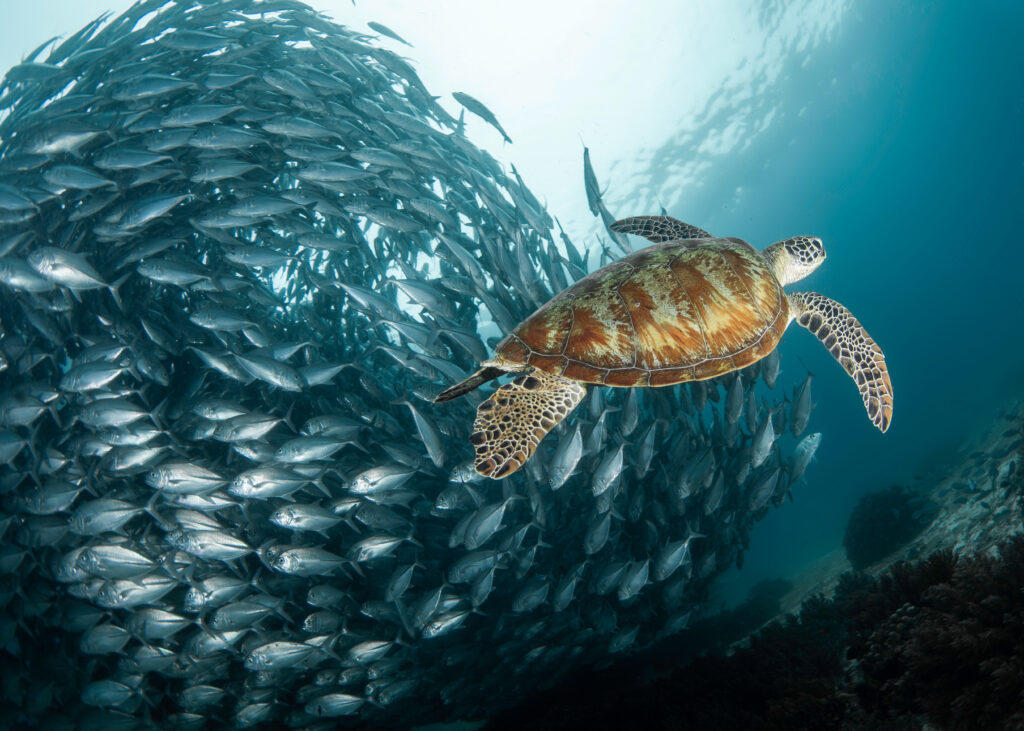
Scuba diving Bohol is one of the most epic experiences known to scuba diver!
I’ve lived in Bohol since 2023: working on Diving Squad, scuba certifying dive students and diving for the pure joy of it. Living the dream baby!!
In this epic guide of awesomeness; I’m going to tell you everything you need to know about scuba diving Bohol: from famous tourist hub Panglao to legendary day trips like Balicasag and Pamilacan then off-the beaten track Anda and beyond!
Lets scour the many Bohol dive sites; how to visit them, where to stay, who to dive with, other cool stuff you can do like tarsiers, chocolate hills, waterfalls, treks, caves, monkeys and more!
(Psssst! I’ve also written a separate article reviewing in-detail the Best Places to Stay in Panglao for Divers.
Table of Content:
- Dive Sites of Bohol (the best ones!)
Best Bohol Dive Sites
Panglao Diving
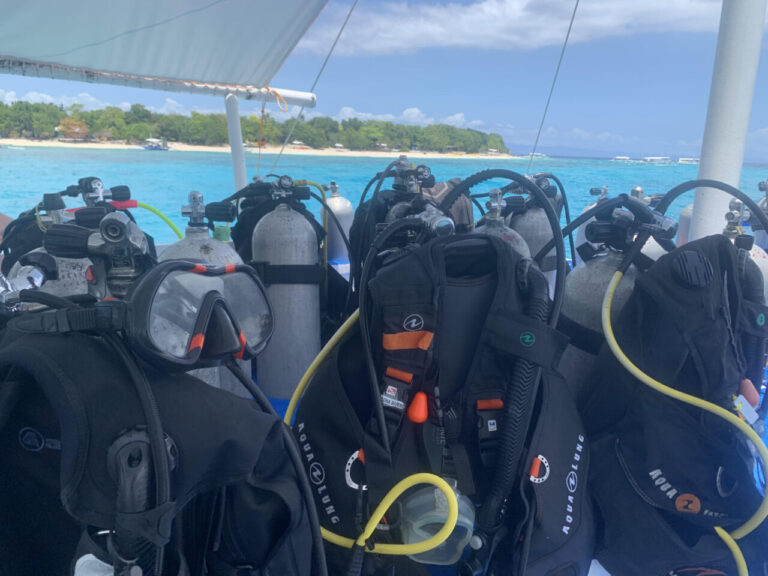
Most Bohol diving takes place from Panglao; which is a much smaller island connected to the south of Bohol island by bridge.
Alona House Reef / Local Dive Sites
Along the south end of Panglao is Alona Beach; this is the tourist-hub where most dive centres are located as well as many hotels, bars and restaurants.
Directly off Alona beach lies Alona House Reef; a healthy coral reef wall that drops down to 35 meters in places and which is divided up into many dives different dive sites known as Alona Dives or Local Dives.
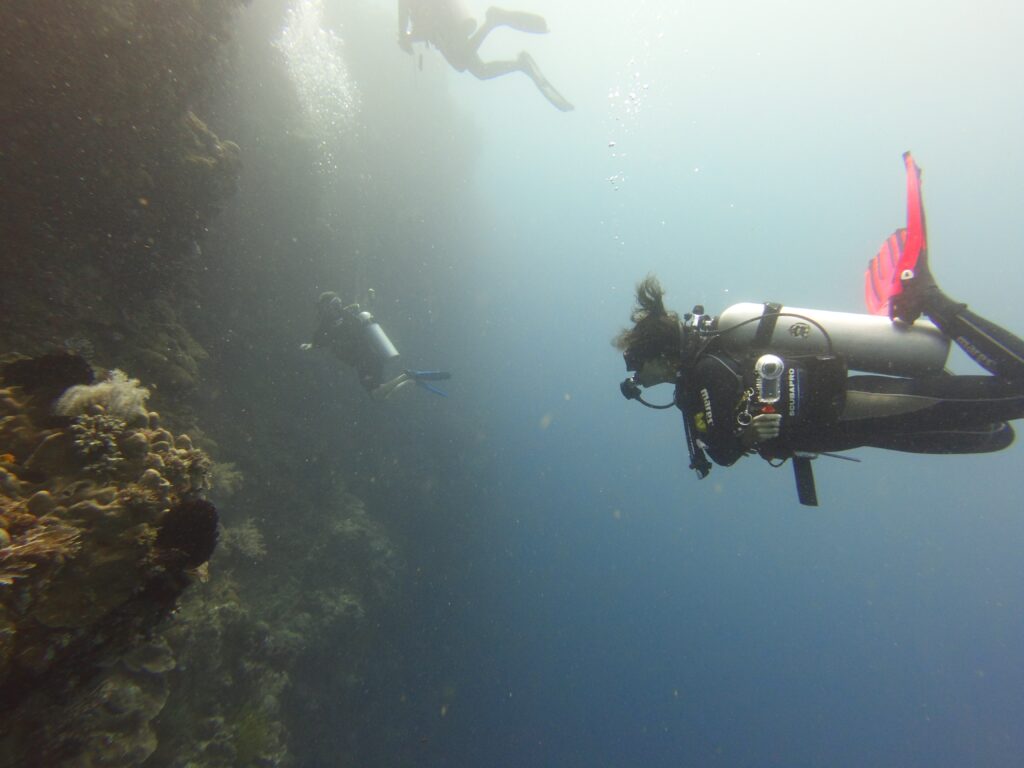
The coral coating the wall of the various dive sites along Alona House Reef is in good condition with many species of hard coral including colourful staghorn corals, whip corals and some beautiful, large sea fans.
You can frequently see all manner of critters here – in addition to countless reef fish, there are Nudibranch, Sea Snakes (Banded Sea Krait!), Glass Anemone Shrimp (look in those anemones with the longer tentacles!) and Frogfish of varying sizes and colours.
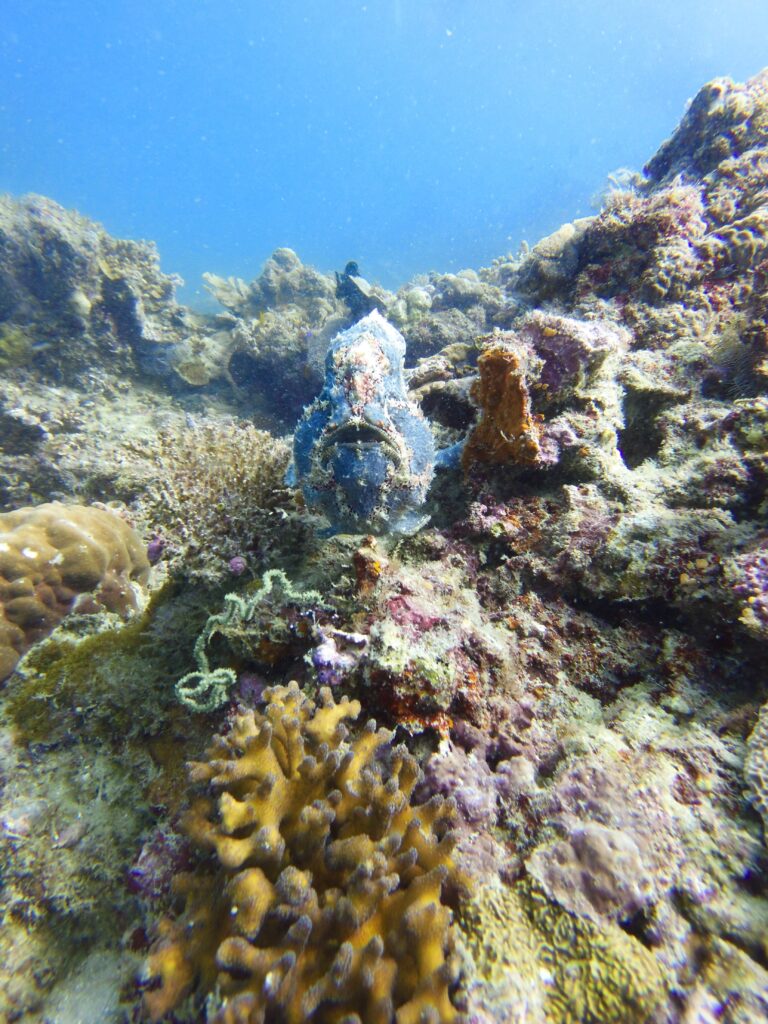
Especially during high season, there can be quite a few other divers in the water; however Dive Guides try to keep groups separate and there are many dive sites to choose from so you generally won’t have to go along with these other groups!
Towards the middle of Alona House Reef there is a cool overhang that can be swum through as well as several inward dipping gaps in the wall that you can explore in and out of.
A common site around Alona Reef are Turtles. You can see both the smaller Hawksbill Turtles munching away on Soft Corals and their larger, herbivorous cousins: Green Sea Turtles chomping into Seagrass.
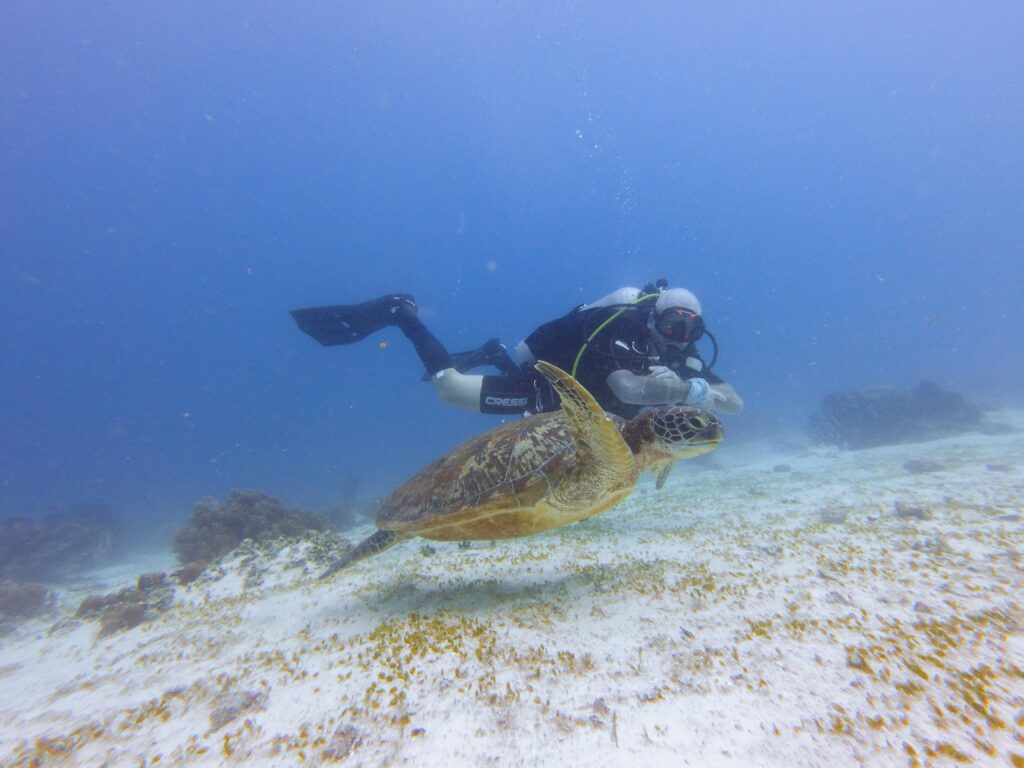
If you look out to the other side away from the coral wall and into the open blue, you can often see pelagic fish like small groups of Jacks, young Yellowfin Tuna and sometimes biiiig schools of Bigmouth Mackeral!
On a few occasions I’ve seen colossal solitary Great Barracuda measuring up to 5 feet – at first I thought they were reef sharks!
At one of my favourite dive sites (mentioned below!); there’s even a really good chance of seeing enormous balls of sardines!
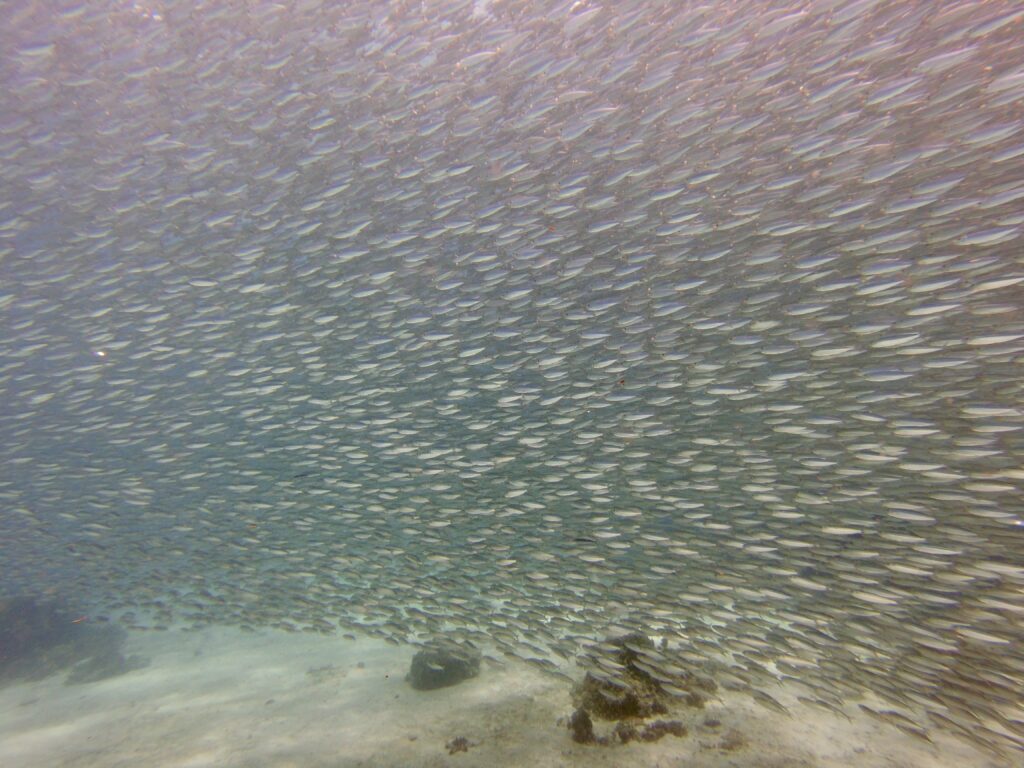
Generally speaking; Alona / local dive sites experience easy dive conditions with good visibility and little to no current.
This makes them ideal for conducting scuba diving courses (e.g. Open Water & Advanced Open Water) as well as Scuba Reviews (Dive Refreshers) and Try Dives (DSD’s).
It’s also very popular even amongst experienced dives as fun dives off Alona take just 5 to 8 minutes to reach by boat and are cheaper than the day trips.
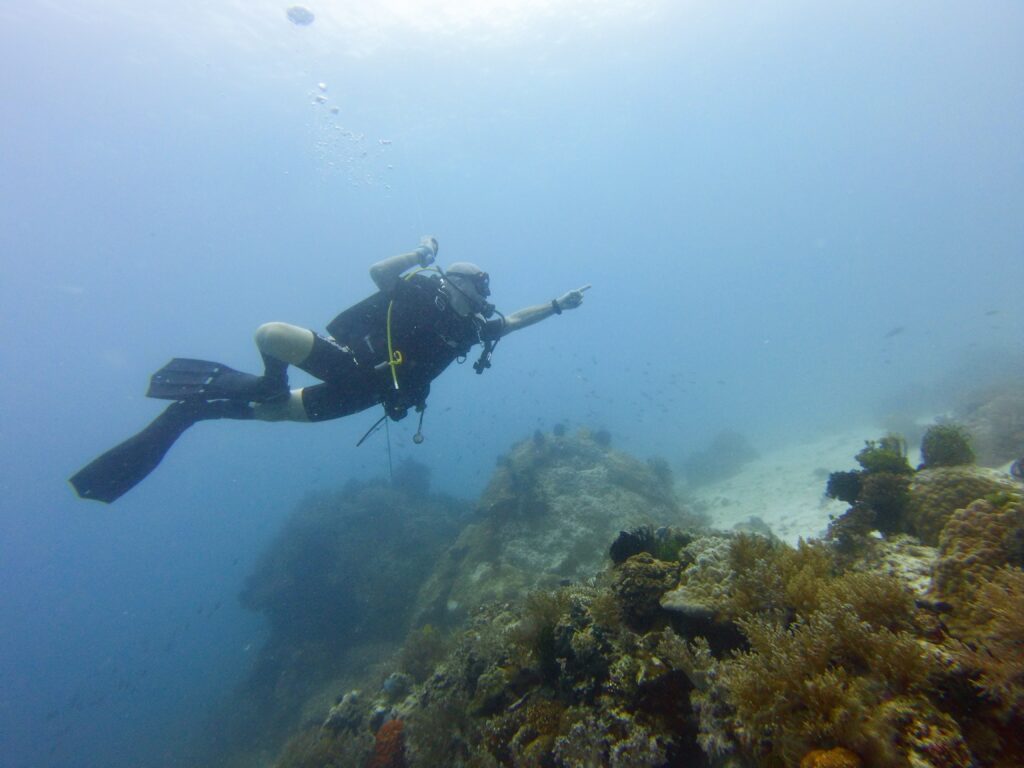
And as those divers who repeatedly come to Panglao even just to dive those local dives will attest to; Alona House Reef has truly some superb scuba diving sites.
My Top 3 Alona Dive Sites:
1) Swiss Bamboo:
Located within the middle of Alona House Reef; Swiss Bamboo takes just a few minutes to reach and is one of the healthiest areas of the whole coral wall.
It drops down to 30 meters in places, although I’ve found it most enjoyable at around 18 meters where the coral wall grows thickest and there are countless reef fish.
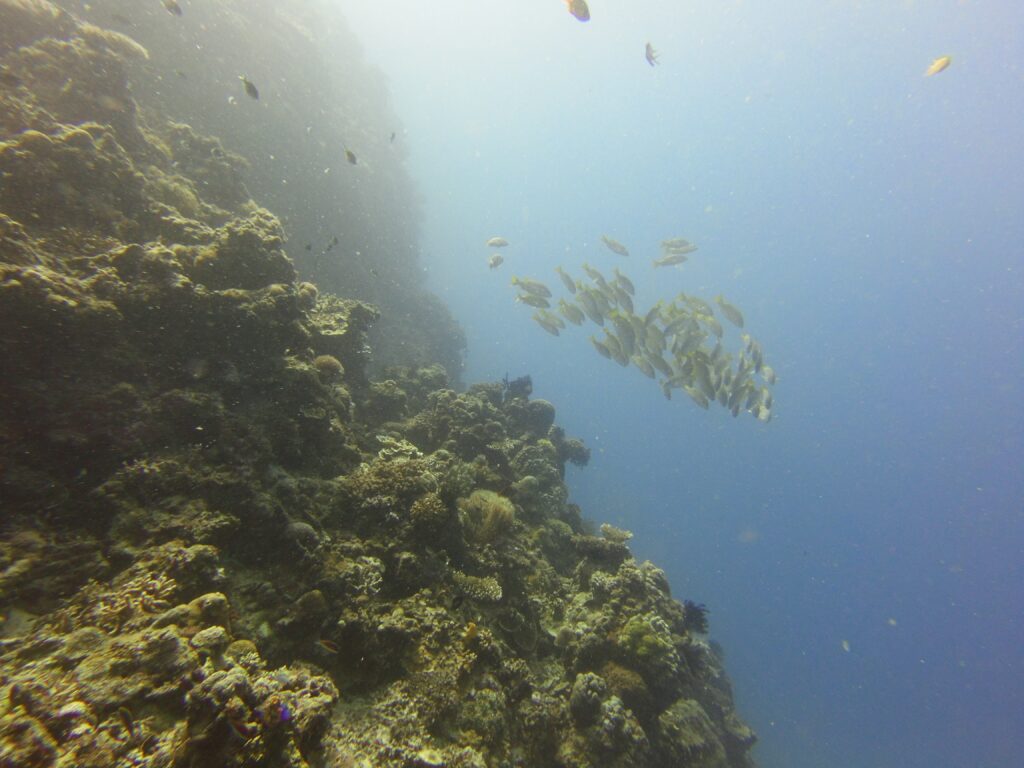
Swiss Bamboo is especially good for seeing turtles (2 kinds are commonly seen, green sea turtles and hawksbill turtles) as well as sea snakes (mostly banded sea krait) and other critters like nudibranch and frogfish.
As with all local dives, you can explore Swiss Bamboo in either direction from the descent point; left or right meaning it takes 2 dives to fully discover!
2) Kalipayan:
Located towards the far west side of Alona, Kalipayan takes a few more minutes to reach but is oh so worth it.
Divers here have a good chance of seeing huge balls of sardines that can not only rival but even surpass the more well known sardine dive sites of Napaling and Moalboal.
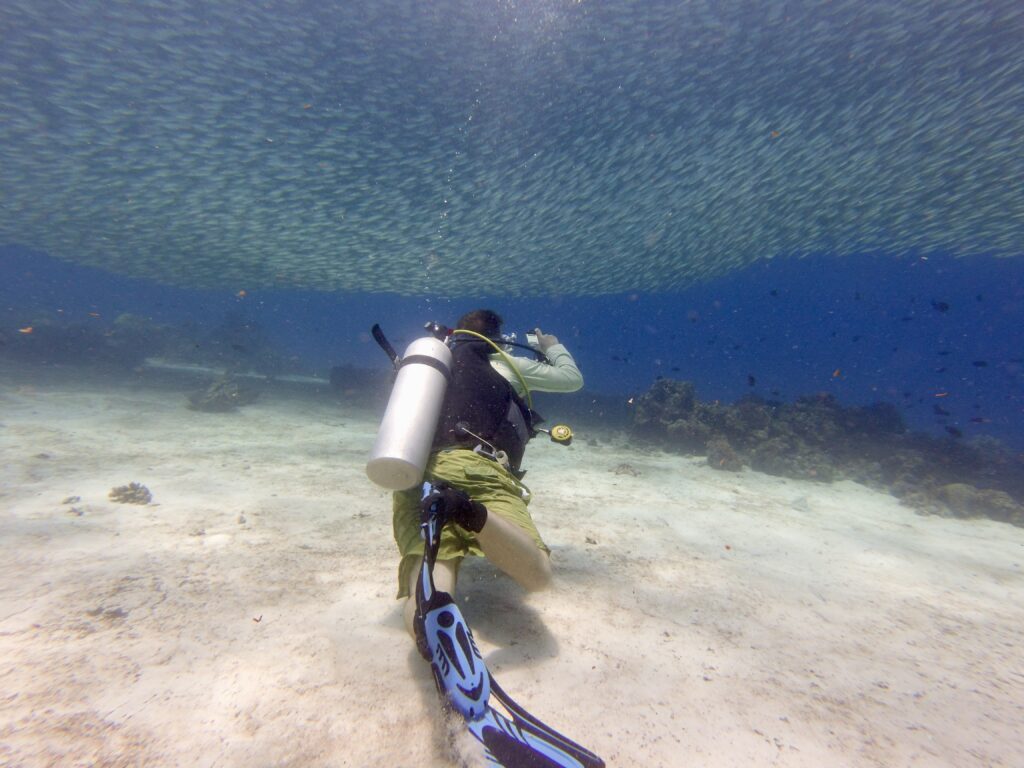
This is a truly epic dive site and beginner-friendly; the sardines are normally found beneath the floating platform at 5 meters but at times their numbers can be so vast that the school stretches all the way down to 18 meters and below around the wall.
This in turn can draw in larger pelagic fish such as Jacks and Emperor Fish which you can see hunting the huge ball of sardines which swerves and twirls like something out of discovery planet! Truly one of the coolest and easiest to reach dive sites in all of Bohol.
3) The Wreck:
If you have your deep diver speciality you can visit the wreck; a small vessel that’s about 12 meters long and sits on the empty seabed at 35 meters deep.
You can’t penetrate this wreck but it is still a truly awesome dive and something completely different.
This wreck is home to a big school of batfish as well as many fusiliers and other large pelagic fish can also be seen such as fearsome looking Dogtooth tuna.
Chunks of coral are growing out of the wreck and you can also see ornate ghost pipefish as well as frogfish here. On the nearby seabed, seahorses can sometimes be seen.
I recommend doing the Wreck with Nitrox so you can spend longer down there. If you’re lucky you’ll have the entire dive site to yourself!
DAY TRIPS:
Balicasag (TOP RECOMMENDATION!)
The main day trips are to Balicasag and Pamilacan – two tiny islands lying 10 km and 15 km out to sea from Panglao.
Day trips feature 2 to 3 dives and depart at 8:45 and are back around 13:30. You have to be at least open water certified to go.
Balicasag is; in my humble opinion; the absolute best that Bohol has to offer. It is a world class dive destination and the most popular day trip from Panglao.
Perhaps the thing Balicasag is most well known for are the vast schools of Jacks and Barracuda swimming out in the open blue and often passing by divers within very close proximity. You have about a 1 in 3 chance of seeing these on a Balicasag dive.
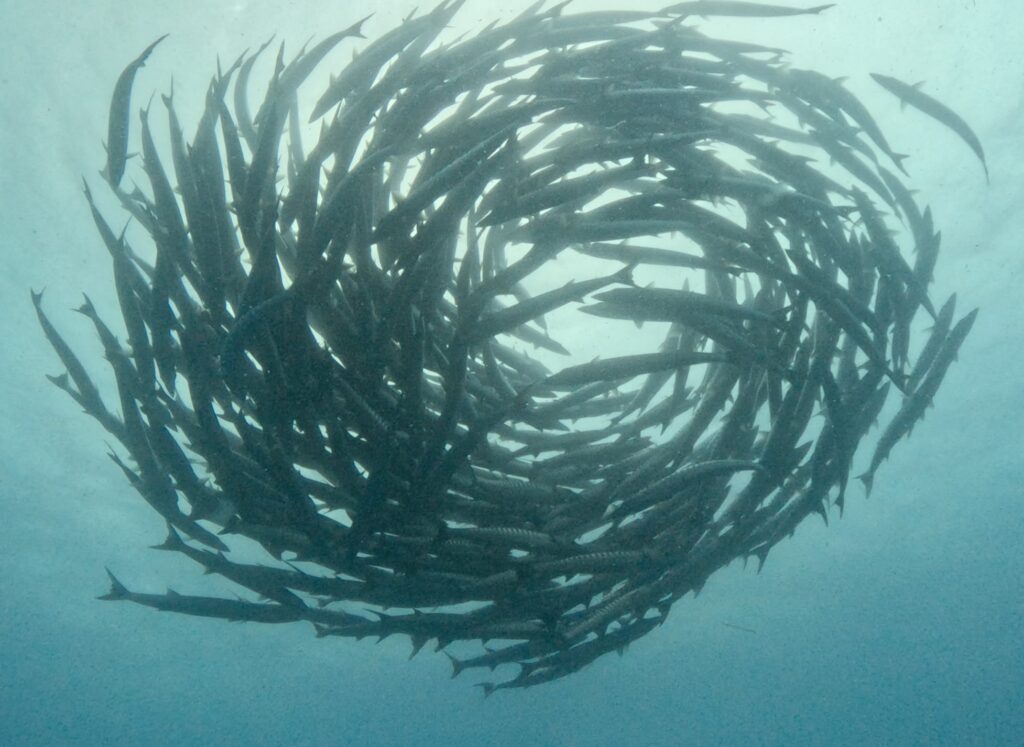
Balicasag is a tiny island lying 10km out to sea from Alona. It takes about 50 minutes to reach via boat. As soon as you enter the water; the first thing you’ll notice is the exceptional water visibility which can often be 40 meters +.
The coral here is both vast and exceptional; it is extremely healthy; dropping down well past 30 meters and spanning all the way around Balicasag island.
There are countless reef fish here; not only the smaller species like you’ll see at the local dive sites but also larger ones such as trumpet fish, giant pufferfish and groupers; not to mention turtles – lots of turtles!
Huge schools of Mackeral are also common and at Black Forest there is often a baby White Tip Reef Shark or two hiding under a bit of table coral!
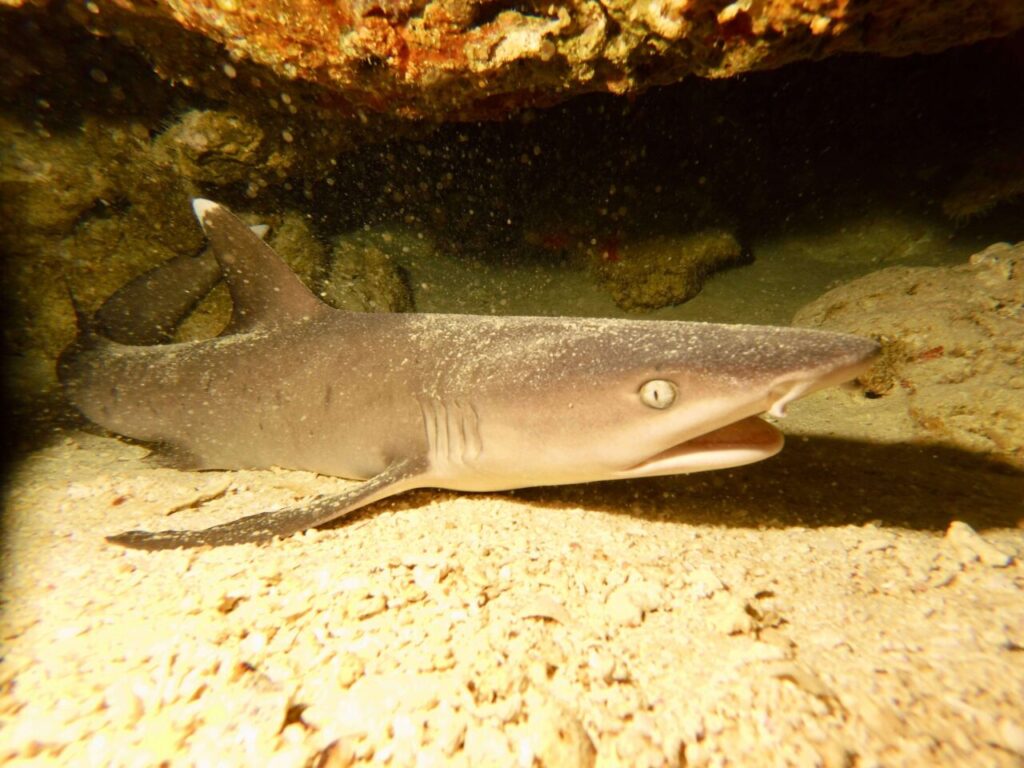
There’s just 5 dive sites around Balicasag; in my opinion the best (and most commonly visited two) are “Black Forest” and “Divers Heaven” as is around each of these that one can often see schooling Barracuda and Jacks and superb coral reef.
Day trips to Balicasag typically feature 2 dives there with the option to add on a third local Alona dive on the way back.
Because Balicsag is a marine sanctuary; only 150 divers are allowed to go there per day. This means that spaces for Balicasag Day Trips get filled up fast! Therefore, I strongly recommend you book this in advance.
Pamilacan
Pamilacan is the next most popular day trip and is also home to some truly phenomenal diving. If you only had 2 days to dive; I would suggest one at Balicasag followed by the second at Pamilacan!
Whilst larger than Balicasag, Pamilacan is still a small island; area. It is located 17km to the southeast of Alona beach and takes a little over an hour to reach via boat.
Whereas Balicasags coral structures are defined by epic wall and sloping reefs; Pamilacan is characterised by extensive soft coral gardens lying on flat plateaus that generally drop off into deeper waters.
In these deeper waters; lucky divers can see massive schools of batfish and sometimes even manta rays or whale sharks.
Around the soft coral gardens there are countless turtles and reef fish as well as frogfish, octopus and giant sea cucumbers.
Pamilacan can experience moderate currents so you’ll need to have your advanced open water certification to dive here. Generally; there are far fewer divers around Pamilacan compared to Balicasag as it is visited less frequently by dive centres.
Day trips to Pamilacan typically feature 3 dives – 2 at Pamilacan and on the way back, 1 seldom visited Panglao Dive called Arko Point which has an awesome coral chimney you can swim through!
Napaling Reef
Located halfway up the northwest side of Panglao, Napaling boasts impressive underwater geological features with mighty wall dives amidst rock and stone that drop down beyond view. It’s a favourite spot for free divers.
The main reason to scuba dive Napaling is for the mighty sardine balls; which can be easily seen at a depth of around 5 meters. It is a truly impressive spectacle to be amidst tens or even hundreds of thousands of Sardines and totally engulfed on all sides by them.
You can sign up for 2 dive trips to Napaling which typically takes about 20 minutes to reach via van from Alona beach!
Dolijo Reef
Located a short distance from Napaling; Dolijo is a beautiful beach with epic views towards Maribojoc and Cebu. There is some awesome sloping coral reef to be dived here; home to many reef fish, critters and turtles.
It takes about 20 minutes to reach Dolijo from Panglao via van – although sometimes you will go there via boat! What I really like about Dolijo is how quiet it is; you’ll see far divers here compared to many other places!
Alternative: Anda Diving
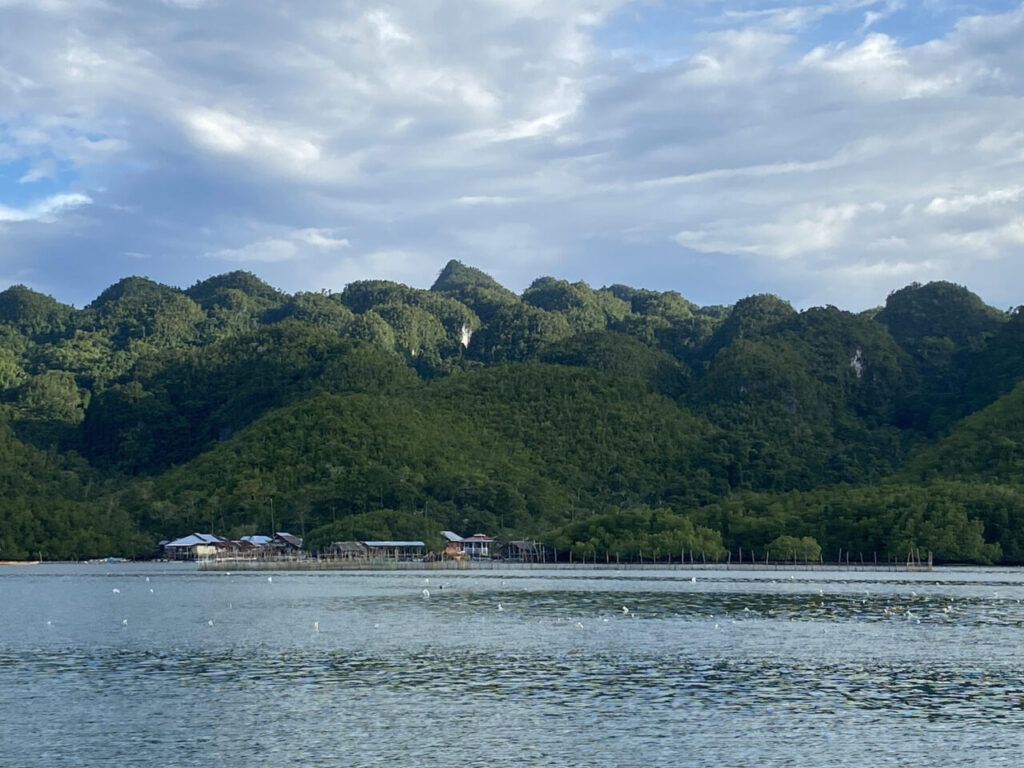
If you want to experience truly off-the-beaten-track diving in Bohol then you should consider journeying to Anda; which lies 120km away from Panglao on the far southeast side of Bohol island and takes around 3 hours to reach from Panglao via bus or 2 hours with scooter.
Anda is an extremely laid back destination; there are far less tourists compared to Panglao yet plenty of cool things to do including epic viewpoints, cave-pool jumping, beaches and waterfalls amidst pristine nature. A highlight is Lamanok island where you can see aincient cave paintings and bat-filled caves used by pre-colonial shamans.
The vibes of Anda are very bohemian and laid back, it feels like how much of the now more busy parts of the Philippines must have been 20 or even 30 years ago.
Like Panglao, some of the dive sites of Anda are known for colourful reef with all manner of creatures big and small. However, unlike Panglao there are far less divers in the water; it’s not uncommon to have a dive site all to yourself, especially during low season.
For those willing to make a half-day trip to Lamanok island, there is also some awesome muck diving with all manner of quirky critters including giant cuttlefish, giant mantis shrimp, endless nudibranch, crustaceans and armies of fast-moving sea urchins that amazingly “run” across the seafloor at over a foot a minute. Check out my main guide on Diving Anda.
(The rest of this article will talk about diving Panglao, which is where I recommend going first!).
What you can See Diving Bohol
1) Stunning Coral Reefs
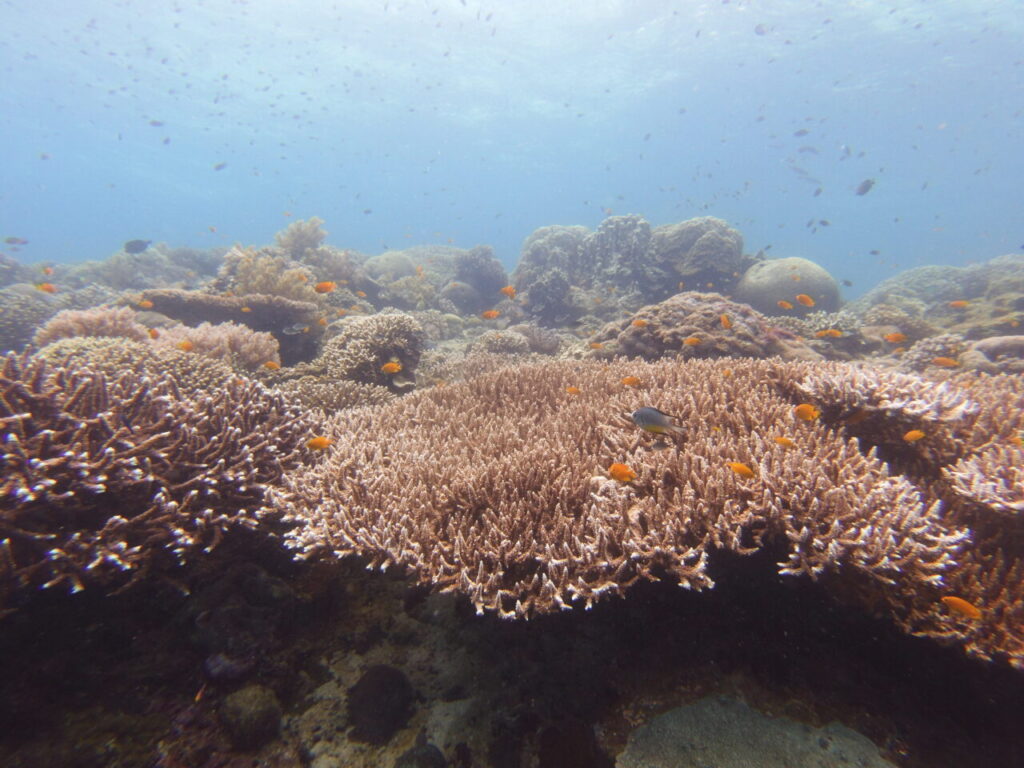
The waters around Panglao are home to some of the best coral in all of the Philippines! There are many awesome sloping coral reefs – both around the local dive sites directly off Alona beach and even more so around the day trip areas of Balicasag, Pamilacan, Dolijo and Napaling (covered in the next section).
These coral reefs are home to an incredible variety of critters; most notably you can see many shapes, sizes and colours of frogfish, nudibranch and reef fish. Green sea turtles and hawksbill turtles as well as banded sea krait (a type of sea snake) are also a common sight.
Visibility around these coral reefs is excellent for most the year, even during rainy season and currents are virtually non-existent.
2) Schooling Jacks & Barracuda
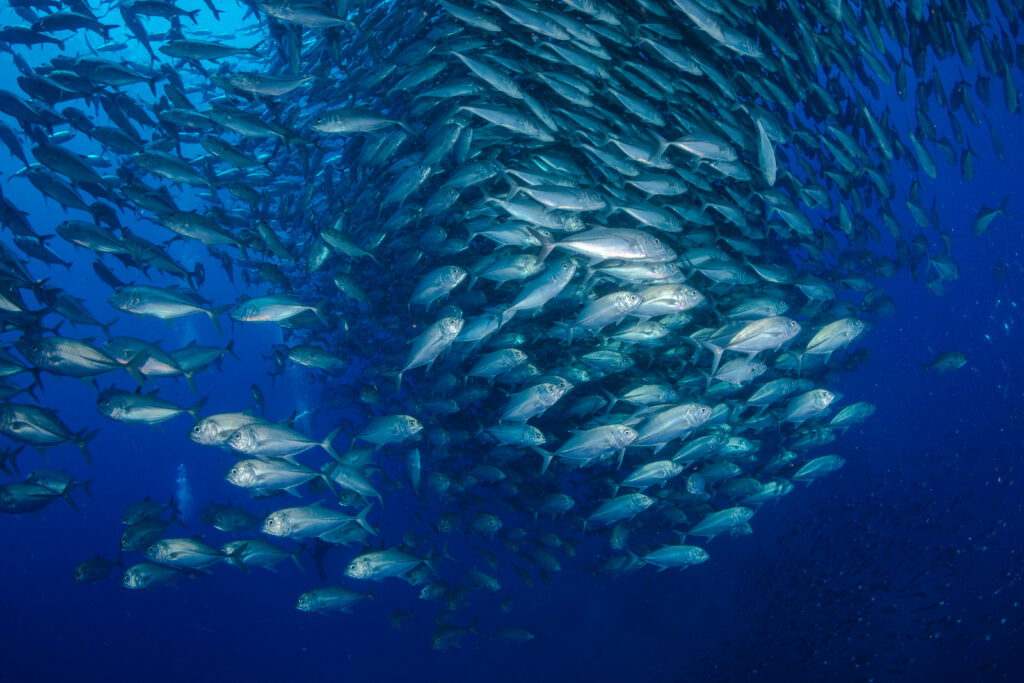
When you go on a day trip to the fabled Balicasag island (a true highlight and a must for any diving trip around Panglao, Bohol) you stand an excellent chance of seeing huge schools of Jacks and / or tornados of Barracuda!
These two species of large, pelaigc fish are an incredible sight to behold; they’re often found swimming out in the open blue and if you spot them in time, you may be close and lucky enough to swim right up to them and immerse yourself within their school.
Keep an eye on your divemaster and if they start banging their tank and swimming off into the distance; it’s a sure sign they’ve spotted Jacks or Barracuda. You have a pretty good chance of seeing these; usually it happens 1 out of every 2 or 3 dives around Balicasag!
3) Whitetip Reef Sharks

Whitetip Reef Sharks which are actually pretty scarce in the rest of the Philippines, however you have a good chance of seeing them at the Balicasag dive site “black forest” where there’s a couple of resident individuals that have been regularly sighted there since 2022.
Whitetip reef sharks are small requiem sharks typically measuring 4 – 5 foot long and easily recognisable from the white tips along their dorsal fins and tails as well as their slender bodies and oval eyes with vertical pupils. They are a shy species that is very rarely aggressive to humans, posing little threat due to their small size.
They spend much of the day resting inside caves and crevices but at night come out to hunt around the reef; their elongated bodies allowing them to squeeze into small nooks and crevices in pursuit of their prefered prey: bony fish, crustaceans and octopus.
4) Critters!
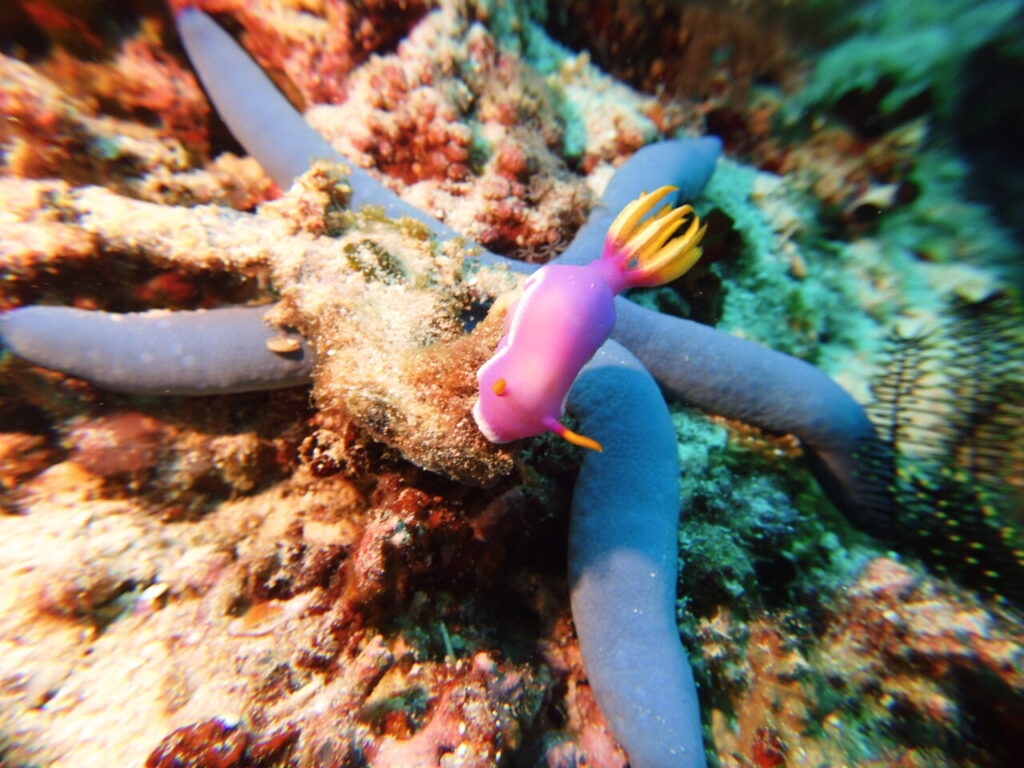
There’s many critters to be seen both around the local and day trip dive sites. In particular; divers have a great chance of seeing frogfish, nudibranch, stonefish, crustaceans like mantis shrimp porcelain crabs, starfish, octopus and seahorses; keep a close eye on your guide who will help you find thm!
Turtles and sea snakes are also a common occurrence as are the numerous reef fish that make their home amidst the coral. Meanwhile; keep an eye out towards the blue on the other side of the coral to see larger creatures like schooling pelagic fish such as sardines and barracuda!
5) Turtles
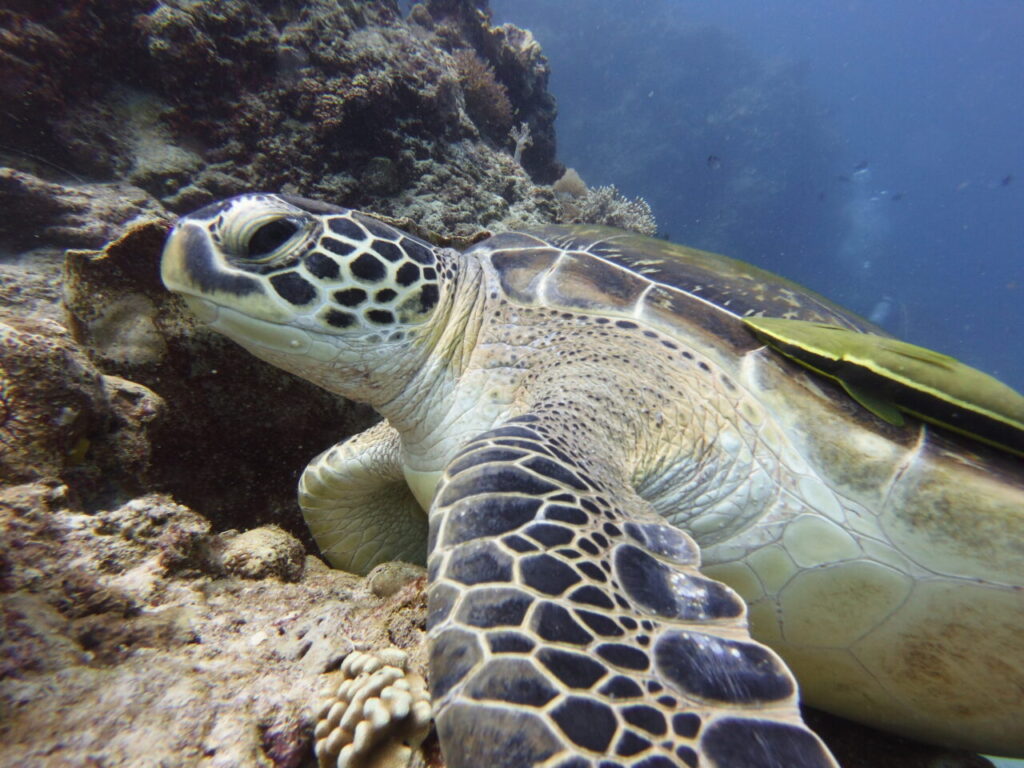
Turtles are a fairly common sight around the Philippines; however Bohol is worth special mention as the dive sites there are especially plentiful with them – particularly green sea turtles but also sometimes the rarer hawksbill turtles. On just one dive around Balicasag I saw seven six green sea turtles and a hawksbill! Totally awesome dude!
The green sea turtles of Bohol are exceptionally laid back and will allow divers to get very close to them as they continue happily munching away on seagrass which makes for some great photo opportunities.
6) Whale Sharks
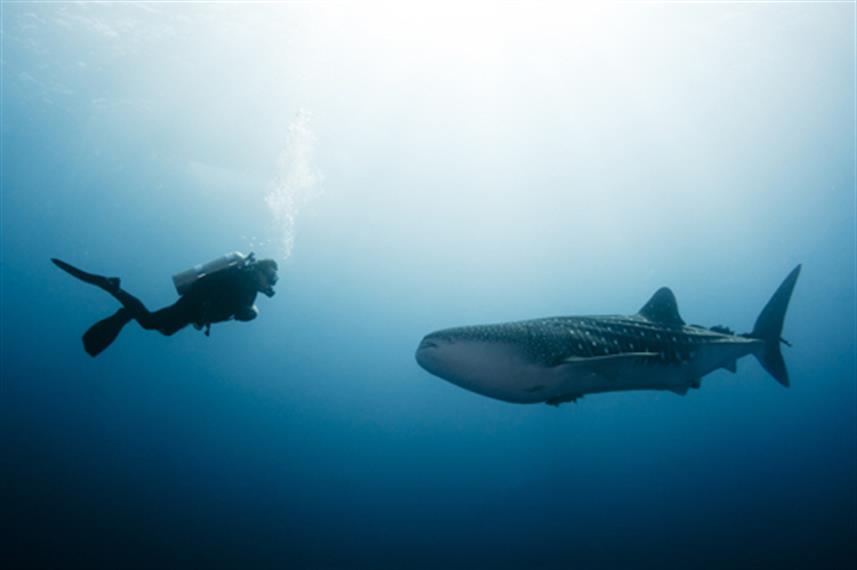
Although this is by no means a guarantee, the dive sites around Bohol do sometimes get visits from whale sharks and unlike other parts of the Philippines such as Oslob; the ones you see here will be behaving naturally as there is no whale-shark feeding taking place.
There’s no denying that stastistically speaking; you’re less likely to see a whale shark than are to see one. It can be months between sightings around Bohol. That said; there are a few sightings every year – both around the local dive sites and day trip dives; so keep your eyes peeled and a prayer to the sea gods upon your lips and you may be lucky.
So keep your fingers crossed and say a prayer to the God’s of the Ocean and you could be lucky…
Where to Stay in Panglao
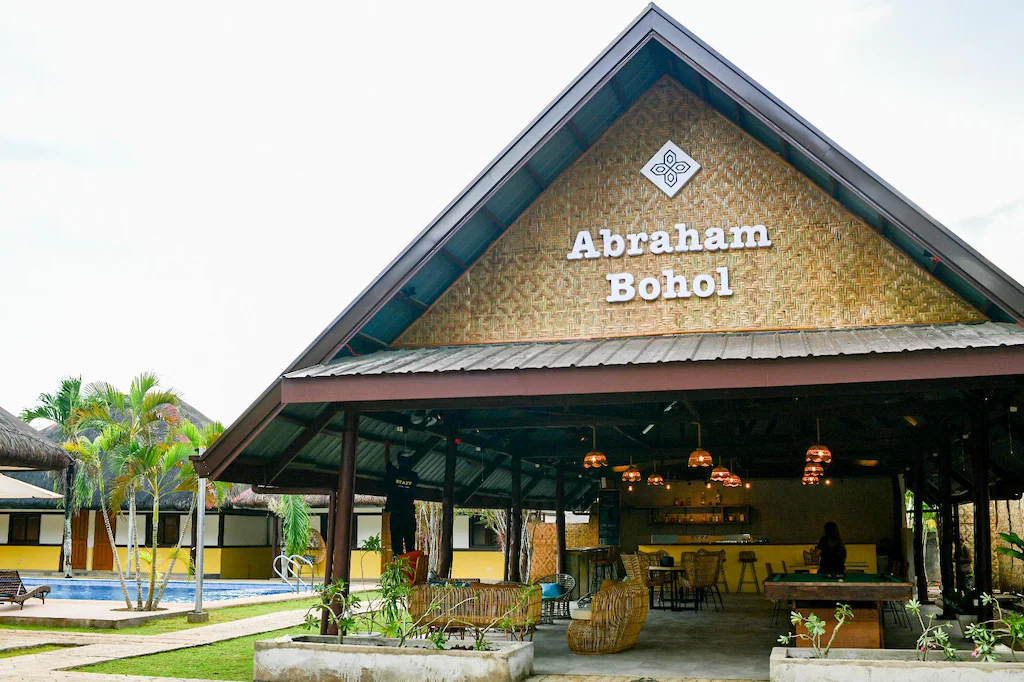
Most people who travel to Bohol go to Panglao; this is the launchpad for the best dive sites as well as where all the tourist infrastructure is located.
Now, whilst Panglao is a small island; it still takes about 25 minutes to drive from the north side to the south.
It is along the south side of Panglao where Alona beach and the vast majority of dive centres, hostels and resorts are located. Therefore it is highly advisable that you stay close to here!
I’ve actually written a separate article reviewing in-detail the 12 Best Places to Stay in Bohol for Divers.
But if you’re low on time, here’s my 3 Top Choice for Where to Stay in Panglao:
- TOP PICK: Abraham Resort: I loved staying here; it is a very social and friendly backpacker hostel with both budget dorms and luxury rooms. Located just 1km from Alona beach. There are many social events as well as a whole number of countryside tours. The bar is big fun and the restaurant serves delicious yet affordable food. I was blown away when I stayed here – strongly recommend! Use my discount code to get 14% off all room bookings: DIVINGSQ. Check out Abraham Resort.
- Most Luxurious Option: Oceanica Resort: This is it: the most luxurious place to stay in Panglao! Situated along it’s own private beach just 3KM from Alona, Oceanica boasts luxury suites, gourmet dining at the restaurant and bar and it’s own spa, gym and swimming pool. There is even an in-house diving team! Check out Oceanica.
- Quiet & Affordable: Domos Native Guesthouse: Domos Native Guesthouse may be on Alona beach but it’s on the far end; tucked away from all the noise, hustle and bustle meaning you can get a truly peaceful nights sleep in an extremely affordable room or lodge. I loved staying here. Check out Domos Native Guesthouse.
Dive Centres in Panglao, Bohol
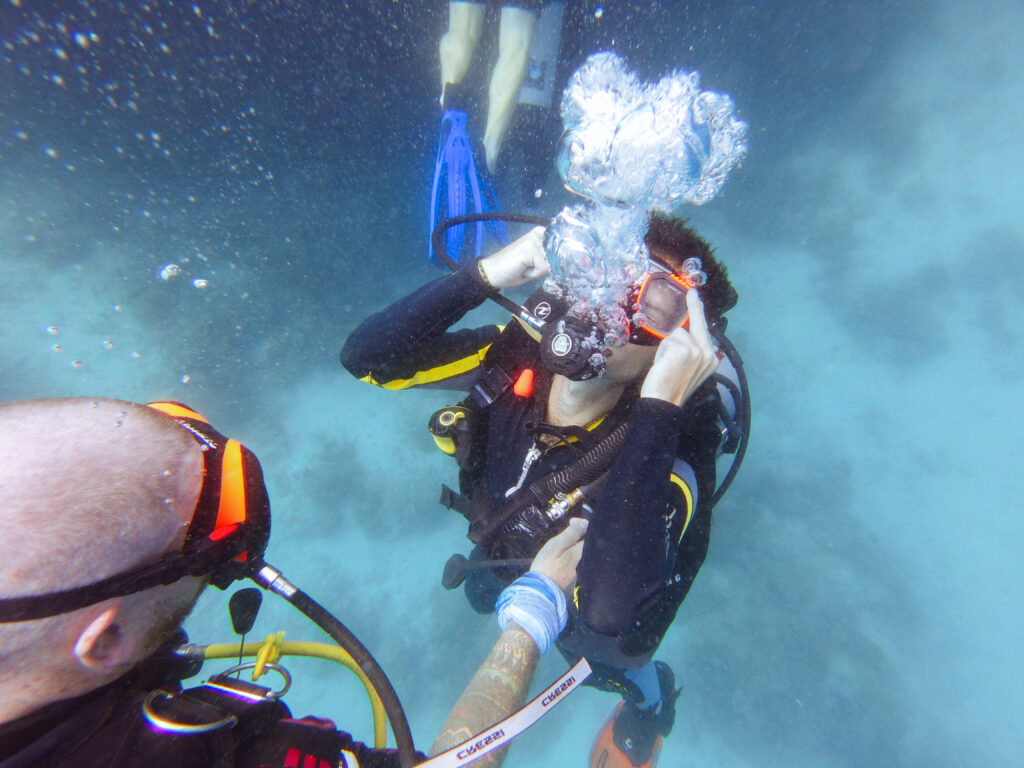
^ A cool photo of me training an Awesome Open Water Student to clear their mask at one of the local dive sites off Alona beach, Panglao. They totally nailed it!
If you’re looking to do a scuba diving course, go on a fun dive or embark on a day trip to Balicasag, Pamilacan, Dolijo or Napaling; there’s a whole bunch of dive centres for you to choose from.
Some are cheaper than others; some have instructors that teach in particular languages and some are just plain old more fun to go to.
If you’re thinking about coming to dive at Bohol; hit me up on Whatsapp and I’ll help you find the right dive centre for you! +447812648968
Panglao Diving Season
Excellent news – you can dive Bohol all year round! Now, generally it’s believed that the best months for diving Bohol are Dry Season: January – Aprilwhen water-visibility is at its best and there is less rain.
May and December are regarded as transition months between dry and wet season and so are a little harder to predict; some years they are dry, others they can be wetter.
June – November marks rainy season – you can still dive during these months but water visibility may be a little reduced and at some dive locations such as Pamilacan water currents can be stronger. That said, you will still get clear and sunny days with excellent water conditions.
In fact, Bohol experiences less of a distinct rainy season than many other parts of the Philippines, meaning rain is more evenly dispersed throughout the year and its not subject to weeks or even months on end of torrential downpour as can be the case elsewhere.
I dived Panglao as late as August and still had awesome visibility with no currents. Check out the photo below of a dive at “Black Forest” off Balicasag, taken on the 6th August 2023:
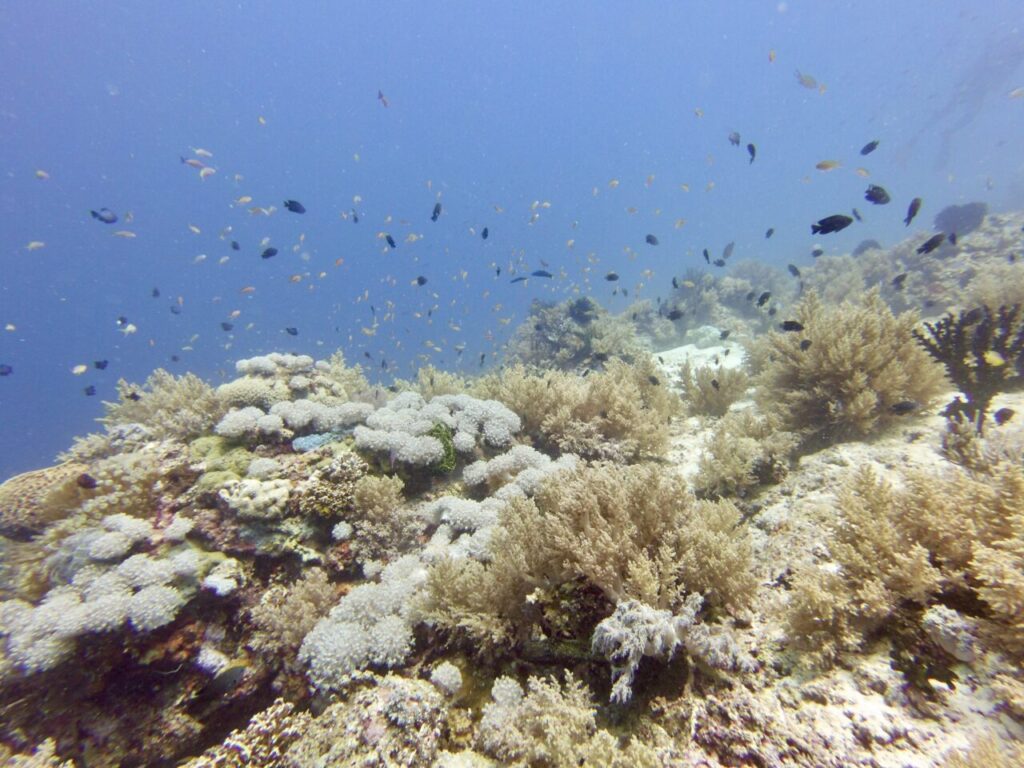
Other Things to Do in Bohol
1) Sea Star Abandoned Mansion
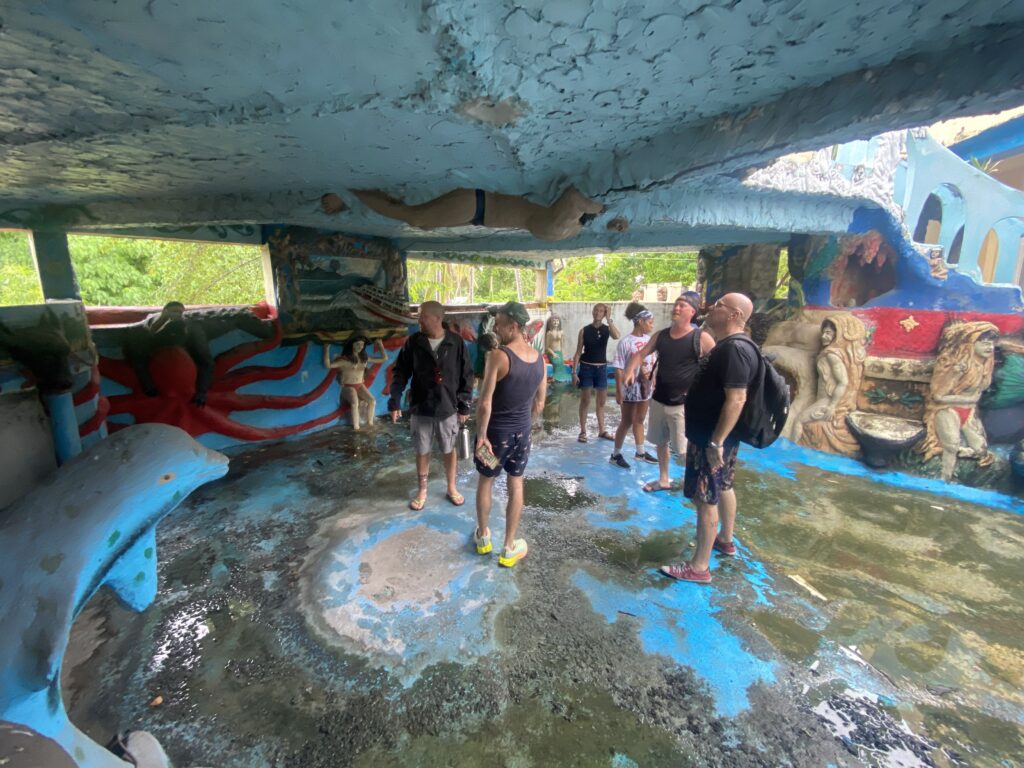
Prepare yourself for an experience unlike any you’ve ever had before! Located in Panglao, just a 15 minute scooter ride from Alona, Sea Star Mansion is a gigantic 3-story high complex that fills as much like a spooky maze as it does a former home.
Built over nearly 2 decades, it’s many corridors, rooms, empty swimming pools and grandiose restrooms across 3 stories are adorned with literally hundreds of statues of a semi-biblical / semi-Atlantian nature.
Ethereal nymphs and mystical sages of stone stare at you as you round ever corner; whilst fantastical beasts and marine animals reach towards you with outstretched tentacles and claws. It takes an entire hour to explore and costs 500 PHP to enter.
Sea Star was built over nearly 2 decades by it’s eccentric German owner – but sadly he never got to finish this project as he died in a tragic accident in the very act of building it. I’m not saying this place is definitely haunted. But it probably is.
You can arrange tours of Sea Star with my best friend, brother in arms and diving instructor guru Mr. Dan Here’s his Whatsapp: +63 9692196728
2) Chocolate Hills
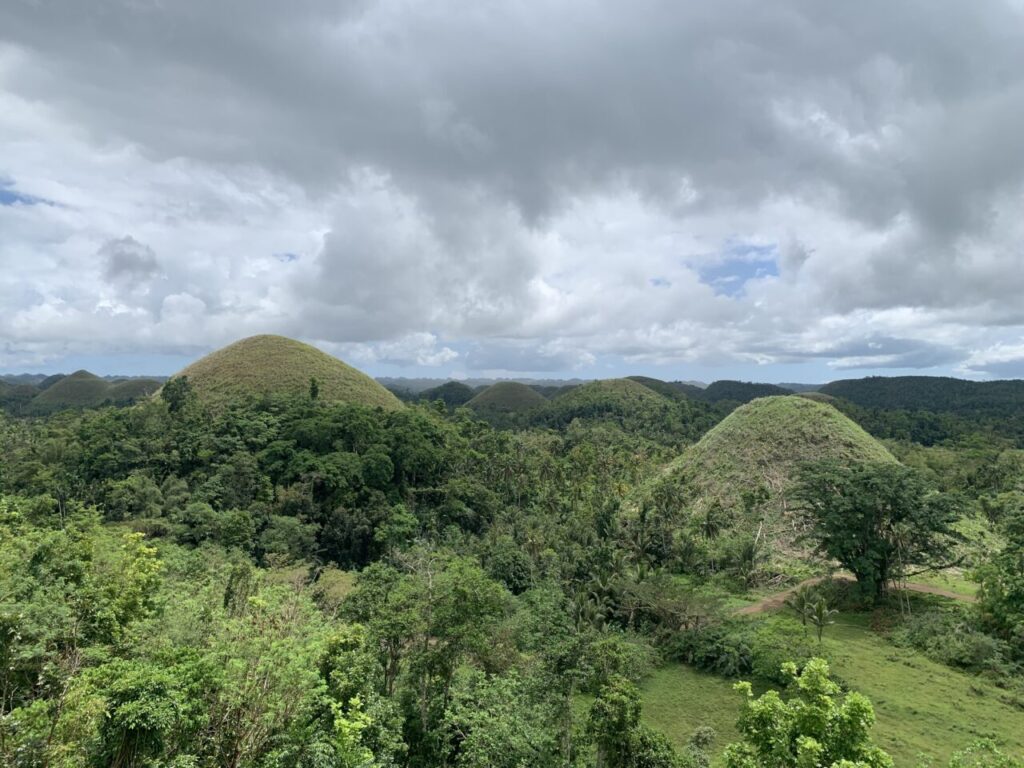
Bohol is famous for its breathtaking scenery – from the famous chocolate hills to many waterfalls, caves and beaches. Located in the Visayas region, Bohol has a surface area of 4117 km squared; making it the 10th largest island of the country.
Bohol is famous for its chocolate hills: a rolling terrain of over one thousand dome shaped hills covered in bright green grass that turns brown in the midst of dry season, earning the name “chocolate” hills.
The chocolate hills – located on Bohol island, form a truly spectacular and unique landscape. Along the way to them, you can also visit many other tourist attractions including the tarsier reserve, adventure park and Lombot River.
I recommend going as part of a tour package which will included all of these places. Your best bet is to book with Abraham Tours. Use my discount code to get a 10% discount: DIVINGSQ. Check out Abraham Bohol Countryside Tour.
3) Tarsier Reserve

The Philippines Tarsier – known locally as “mawumag” is a tiny, nocturnal primate with huge eyes and elongated fingers. These charismatic animals are both surreal and alien like in their appearance and mannerisms – no wonder they were the inspiration for Yoda!
My favourite way to see them is at the Tarsier Conservation Sanctuary in Corella en-route to the chocolate hills. Again; you can do this as part of a tour package with Abraham Tours.
Use my discount code to get a 10% discount: DIVINGSQ. Check out Abraham Bohol Countryside Tour.
4) Waterfalls
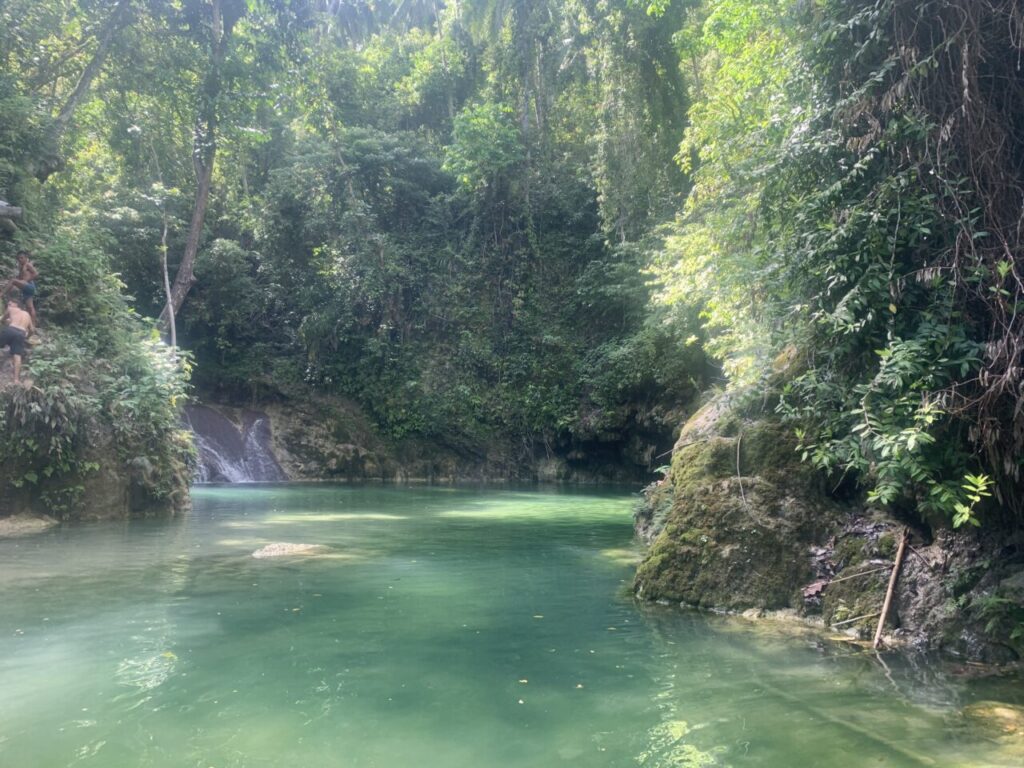
There’s a bunch of great waterfalls you can visit around Bohol – most are about 60 minutes drive from Panglao – the three best ones are Camugao Falls, Ingkumhan Falls, Kasawan Falls and Twin Falls.
All feature decent 15 foot (ish) high jumps and are surrounded on all sounds by pristine jungle and nature. Noice!
5) Danao Adventure Park
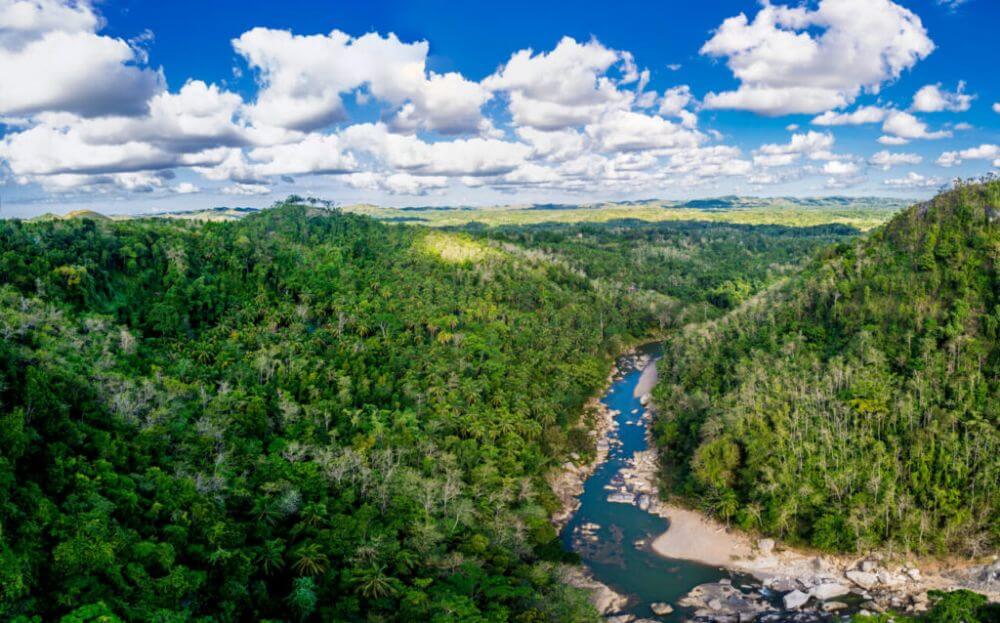
About 2 hours drive from Panglao lies Danao Adventure Park. There’s a couple of pretty epic ziplines you can do on your own or as a pair…but the main attraction is “The Plunge”.
The Plunge involves being attached to a giant bungee-swing and sent plummeting down some seventy-five feet over an epic jungle canyon which you then swing back and forth over for a minute or so before being hoisted back up.
This is something of a right-of-passage for many locals – who once doing it vow never to do so again! You can see me partaking in “The Plunge” at the 35 second mark in my Bohol Movie. I really enjoyed this experience – it actually really wasn’t that scary! Although it did leave me with somewhat aching balls from the harness…
6) Hinagdanan Cave
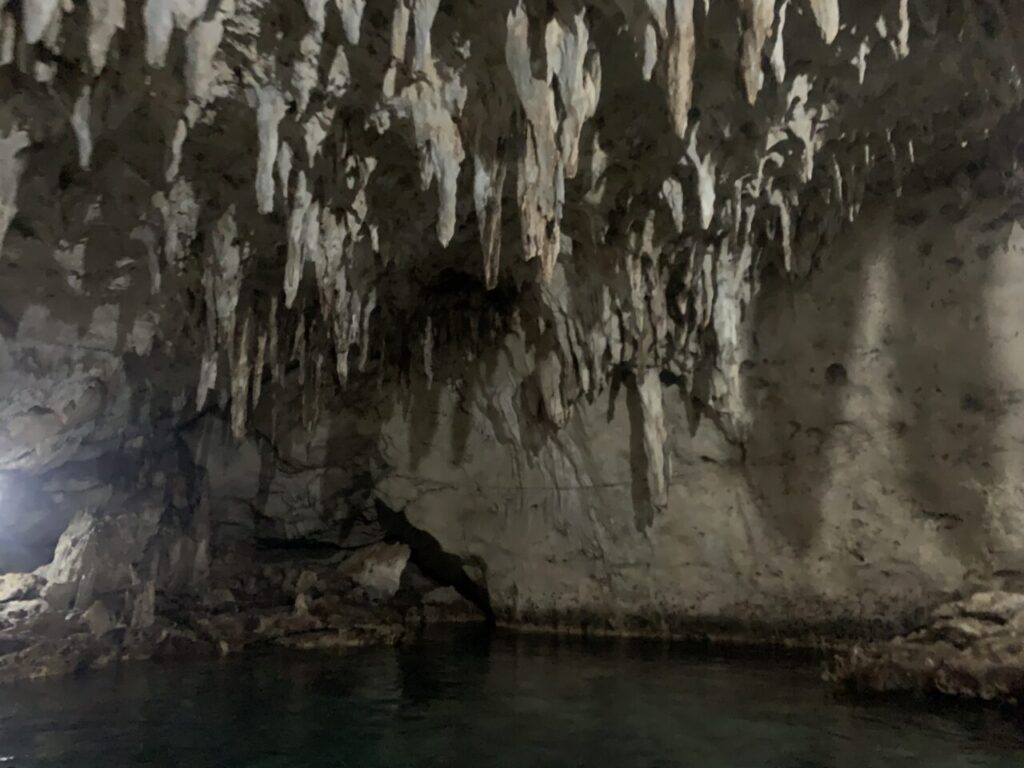
There’s a bunch of caves around Bohol – one of the easiest to do is Hinagdinan Cave which is actually on Panglao island. It’s actually a fairly small cave with a resident colony of bats roosting along the stalactites overhead.
What’s really cool about Hinagdanan cave is that you can go swimming there; which is extremely refreshing as the water is quite cool. It’s fairly dark down there but look closely and you’ll see a few fish and a crab-like-thing or two!
How to Get to Panglao
Wherever you plan to go in Bohol, whether that be Panglao or Anda; there are 2 Principle Gateways onto the Island:
- Tagbilaran City Port: If you’re coming on a ferry from a nearby Philippines island such as Cebu or Siquijor or Dumaguete, you’ll arrive in Tagbilaran city. From here it’s a 40 minute tricycle ride to Alona beach on Panglao. Or a roughly 3 hour bus ride to Anda. You can check out Ferry Schedules to Bohol Here.
- Bohol-Panglao International Airport: If you’re flying in, you’ll land here from which it is about a 15 minute tricycle ride to Alona beach (or a 25 minute ride to Tagbilaran).
Staying Fit – GYMS
Staying fit on the road is important. You never known when climate change might reduce the entire world to a desert wasteland and the remaining survivors form automobile-worshiping cults, racing around in weaponised cars whilst killing the shit out of each other as they chant “what a lovely day”!!!
If that does happen and you’ve spent the past several few months stuffing your face with fried food and never once breaking a sweat, you’ll be the first to go, most likely tied to the front of a war-vehicle as some grizzly trophy. Don’t get caught out – stay strong!
Luckily, theres several gyms you around Panglao. My favourite is Bob’s Gym it’s very close to Alona beach and costs just 150 pesos per session. They have all the usual weights and equipment you’d expect from an old school gym. No AC, only fans as is the case for all gyms on the island. This is a friendly and laid back gym with good music and vibes. A lot of travellers go here.
Another options is Power Slim Fitness Gym – which is further from Alona beach (about a 15 minute ride away as its half way up on the east side of Panglao). It has pretty much the same gear as Bob’s Gym minus the punchbag.
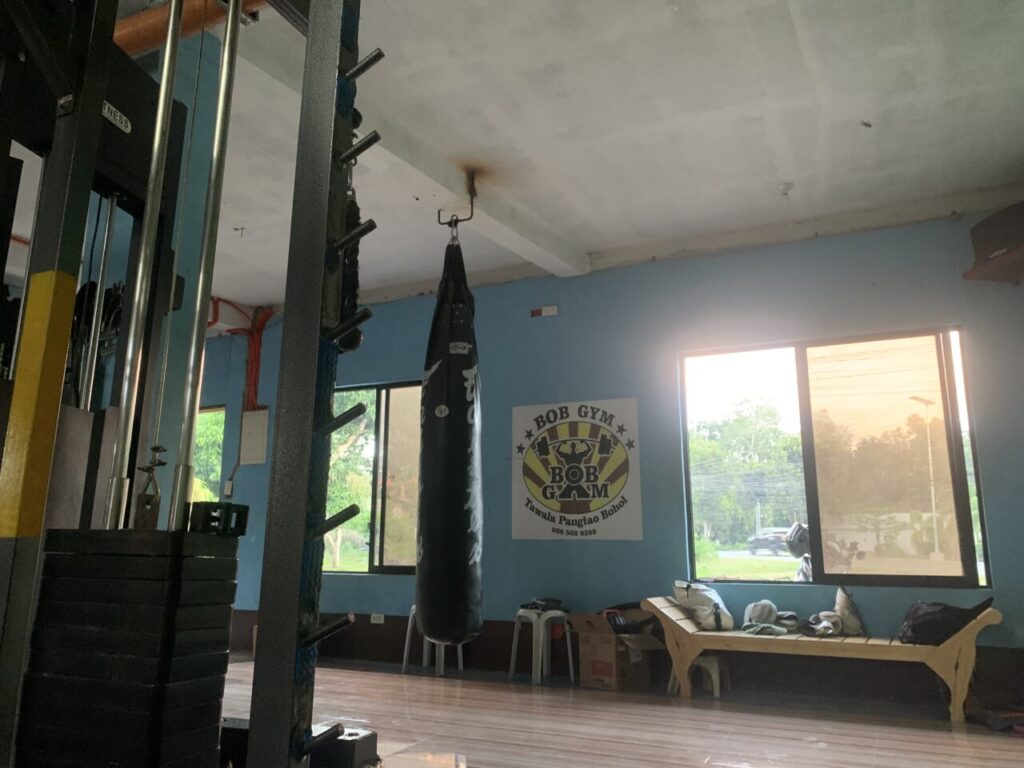
Where to Eat in Panglao
There are some really nice places with tasty food in tranquil settings to eat around Panglao! Check out My Faves!
- South Farm: Situated around a beautiful lake with many wild ducks and geese. The food – whilst quite pricey – is really delicious and the views are incredible.
- Lekker Garden: Extremely charming world vibes with delicious and healthy African inspired food that even includes vegetables; not an easy thing to come by when eating out in the Philippines!
- TipTop: Around Alona, TipTop is an excellent place to grab a nice breakfast and excellent coffee in a quiet, tranquil setting. One of my favourite places to start the day!
- Poco Loco: An awesome Mexican restaurant just 1km up from Alona beach. Usually very quiet, with friendly vibes and delicious food. Their Chilli Con Carne is killer!
- Bohol Bee Farm: Gorgeous ocean views restaurant about a 12 minute scooter ride up from Alona. Also ice cream, honey and all the bees you can eat.
- Egays Farm: About 10 minutes away from Alona, tucked away on a quiet little part of the island this is a beautiful farm you can walk about and order delicious food from including freshly killed chicken and blue rice!
- Mocoo: Right along the main road of Alona, Moco is a Moroccan cusine restaurant with mouth watering Middle Eastern Vibes!
- Overgrown: This is a Digital Nomady type work cafe with Aircon up the road round Alona. Tasty Cheese Sandwich!
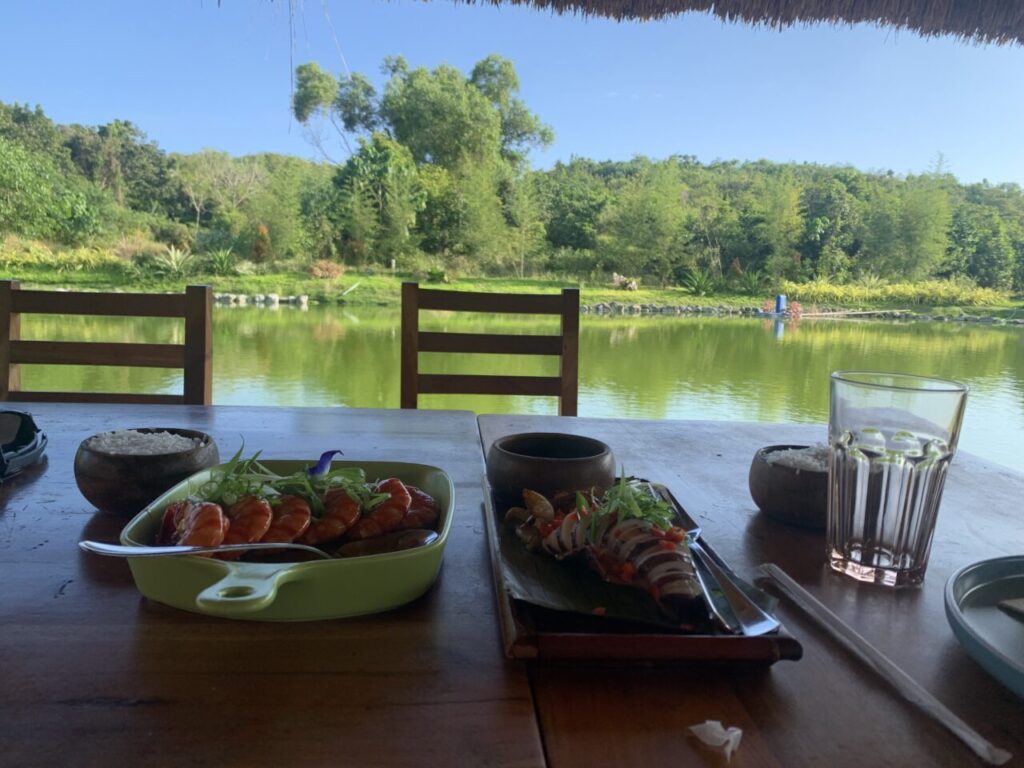
Panglao Nightlife
Panglao has a respectable but not too in-your-face nightlife. Here’s a few favourites you can check out:
- Bamboo – I like it here because they have big screens playing cool footage often of scuba diving clips. The music is pretty chill and they serve a mean cocktail.
- Alona beach lounge
- Eclipse Bar
- Hennan’s Resort very much has it’s own self-contained nightlife occurring within but you have to stay there to gain access.
- Alona Divers regularly host socials after hours with beer and snacks in the dive centre. Inquire within!
Bohol Diving FAQ
Where is the Best Diving in Bohol?
Most of the best Bohol diving is reached from Alona beach in Panglao. In my opinion, the all-time best group of dive sites are those located around Balicasag; especially the dive site “Black Forest” where you can see whitetip reef sharks, giant barracuda, turtles, coral, fish, various critters and sometimes even whale sharks.
Pamilacan offers some nice off-the-beaten-track diving from Panglao. For truly off-the-beaten-track Bohol diving head to Anda which has some great coral reef as well as a few muck dive sites.
Can Beginners Dive Bohol?
Absolutely – many folks attain their open water certification at Panglao as the local dive sites off Alona are absent of currents and beginner friendly!
Is Getting to Bohol Easy?
Totally little dude! Simply catch a ferry to Tagbilaran and then a forty minute tricycle to Alona beach or fly into Bohol-Panglao international airport and then take a 15 minute drive to Alona beach. To reach Anda it is a 3 hour bus ride from Tagbilaran.
What Other Things are there To Do in Bohol besides dive?
Check out the beautiful chocolate hills, the waterfalls, hinagdanan cave and if you’re feeling adventurous partake in “The Plunge” bungee jump at Danao Adventure Park!
Where is the Best Place to Stay in Bohol for Divers?
I’m so glad you asked! I wrote a whole separate article all about the Best Places for Divers to Stay in Bohol – check it out here!
Bohol Diving Squad DEBRIEFING:
Gawd-dayum – you gone done finished this here article about Bohol! Bloody great job!! We’ve covered a helluva a lot! First we went over Awesome Marine Animals you can see Diving Bohol, with original photos and videos from my time there in March – September 2023. This was followed by a quick summary of the Best Bohol Dive Sites.
After that, I covered Where to Stay in Bohol for Divers and then talked about my favourite Bohol Dive Centre.
Next, we went over When is the Best Time to Dive Bohol before discussing Other Things To Do in Bohol – of which there’s a lot!
We then covered the very important topic of How To Get to Bohol, before talking about Local Gyms as well as Restaurants and Nightlife. Finally, we rounded it all off with a good old-fashioned FAQ Section!
Finally we’ve finished the article and you’re in real-time on the Diving Squad Debriefing in which we summarise all that’s been covered. All that remains now is for you to ahead and book your dream diving trip to Bohol!
Oh by the way! Anytime you book accommodation or a ferry journey through one of the affiliate links on this page, we’ll make a small yet delicious commission at no extra cost to yourself. Thanks – it’s stuff like this which helps keep Diving Squad ultra fresh, sexy and as the best damn scuba diving blog in the multi-verse!
It also helps us continue to fling our members out into various far-flung corners of the world in order to continue gathering brand new content for you. Awesome!
Thanks for reading – stay awesome -stay scubarey!
Read Similar Content:
